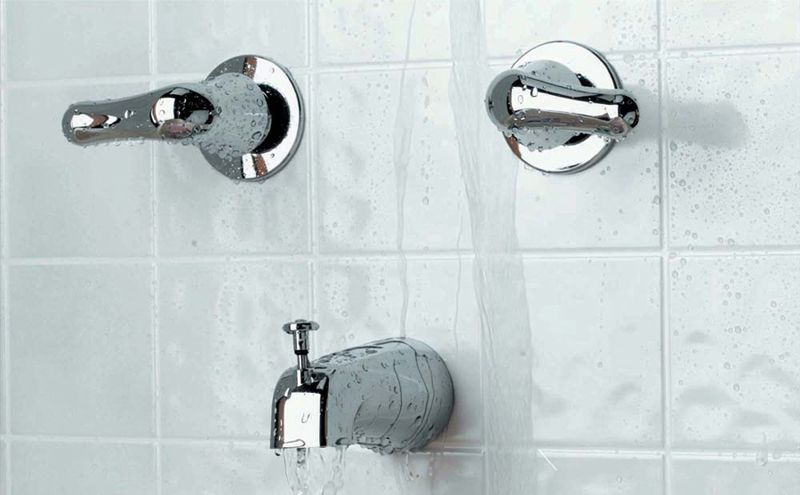
Tub/shower plumbing is notorious for developing drips from the tub spout and the showerhead. In most cases, the leak can be traced to the valves controlled by the faucet handles.
Tub and shower faucets have the same basic designs as sink faucets, and the techniques for repairing leaks are the same as described in the faucet repair section of this book (pages 159 to 168). To identify your faucet design, you may have to take off the handle and disassemble the faucet.
When a tub and shower are combined, the showerhead and the tub spout share the same hot and cold water supply lines and handles. Combination faucets are available as three-handle, two-handle, or single-handle types (next page). The number of handles gives clues as to the design of the faucets and the kinds of repairs that may be necessary.
With combination faucets, a diverter valve or gate diverter is used to direct water flow to the tub spout or the showerhead. On three-handle faucet types, the middle handle controls a diverter valve. If water does not shift easily from tub to showerhead, or if water continues to run out the spout when the shower is on, the diverter valve probably needs to be cleaned and repaired (page 171).
Two-handle and single-handle types use a gate diverter that is operated by a pull lever or knob on the tub spout. Although gate diverters rarely need repair, the lever occasionally may break, come loose, or refuse to stay in the up position. To repair a gate diverter set in a tub spout, replace the entire spout.
Tub and shower faucets and diverter valves may be set inside wall cavities. Removing them may require a deep-set ratchet wrench.
If spray from the showerhead is uneven, clean the spray holes. If the showerhead does not stay in an upright position, remove the head and replace the O-ring.
To add a shower to an existing tub, install a flexible shower adapter. Several manufacturers make complete conversion kits that allow a shower to be installed in less than one hour.

Tub/shower plumbing is notorious for developing drips from the tub spout and the showerhead. In most cases, the leak can be traced to the valves controlled by the faucet handles.
 FIXING THREE-HANDLE TUB & SHOWER FAUCETS
FIXING THREE-HANDLE TUB & SHOWER FAUCETSA three-handle faucet type has two handles to control hot and cold water, and a third handle to control the diverter valve and direct water to either a tub spout or a shower head. The separate hot and cold handles indicate cartridge or compression faucet designs. To repair them, refer to the opposite page (compression) or page 115 (cartridge).
If a diverter valve sticks, if water flow is weak, or if water runs out of the tub spout when the flow is directed to the showerhead, the diverter needs to be repaired or replaced. Most diverter valves are similar to either compression or cartridge faucet valves. Compression-type diverters can be repaired, but cartridge types should be replaced.
Remember to turn off the water before beginning work.
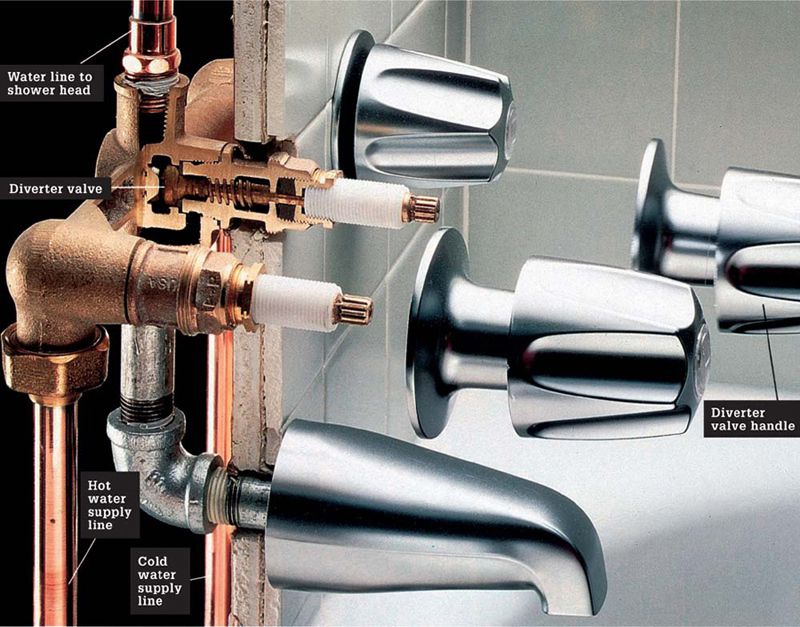
A three-handle tub/shower faucet has individual controls for hot and cold water plus a third handle that operates the diverter valve.
 HOW TO REPAIR A COMPRESSION DIVERTER VALVE
HOW TO REPAIR A COMPRESSION DIVERTER VALVE
Remove the diverter valve handle with a screwdriver. Unscrew or pry off the escutcheon.
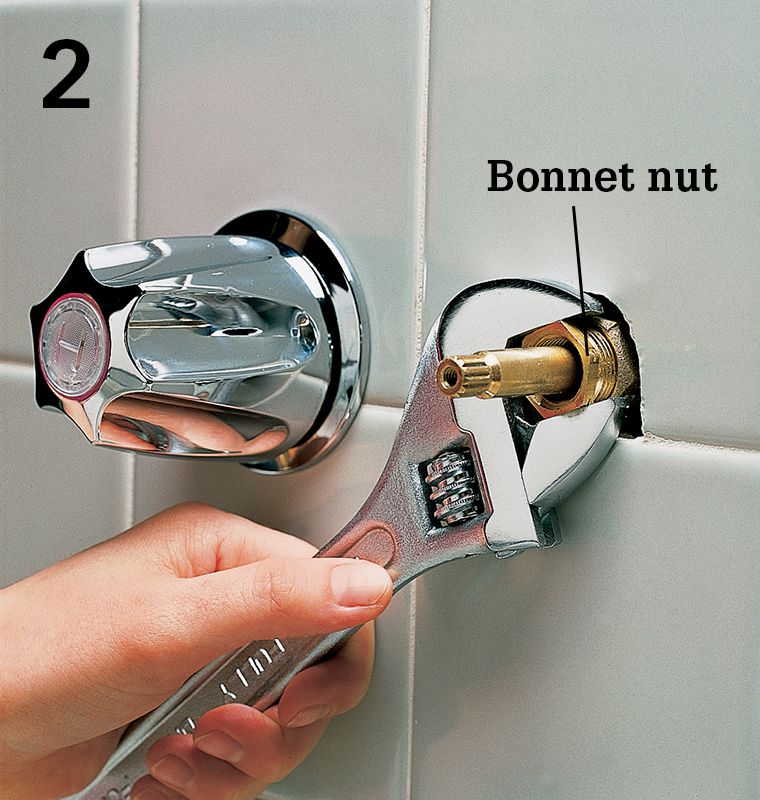
Remove bonnet nut with an adjustable wrench or channel-type pliers.
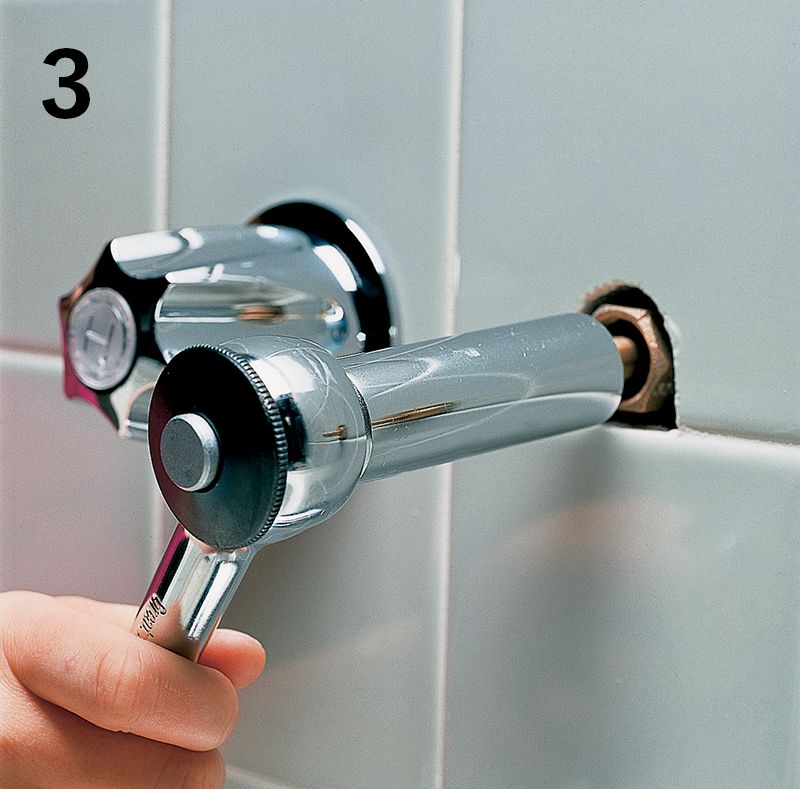
Unscrew the stem assembly, using a deep-set ratchet wrench. If necessary, chip away any mortar surrounding the bonnet nut.
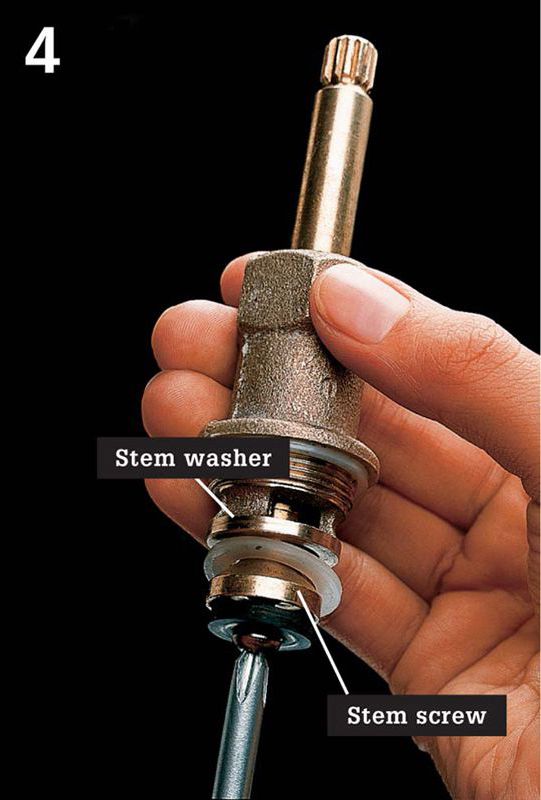
Remove brass stem screw. Replace stem washer with an exact duplicate. If stem screw is worn, replace it.
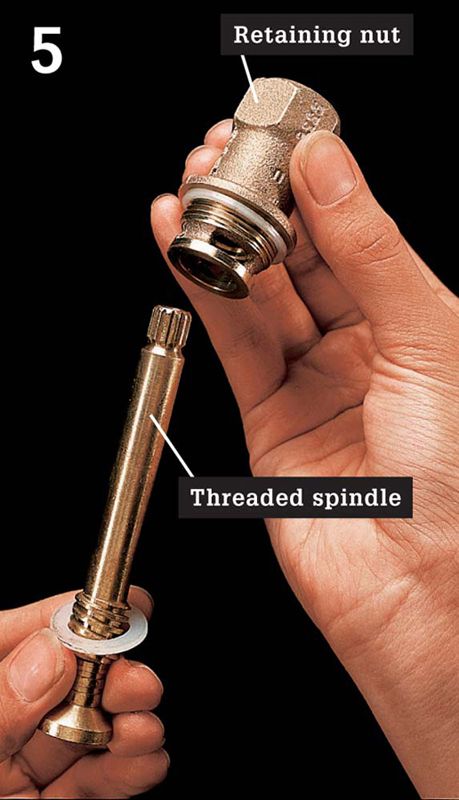
Unscrew the threaded spindle from the retaining nut.

Clean sediment and lime buildup from nut, using a small wire brush dipped in vinegar. Coat all parts with faucet grease and reassemble diverter valve.
 FIXING TWO-HANDLE TUB & SHOWER FAUCETS
FIXING TWO-HANDLE TUB & SHOWER FAUCETSTwo-handle tub and shower faucets are either cartridge or compression design. They may be repaired following the directions on pages 171 and 175. Because the valves of two-handle tub and shower faucets may be set inside the wall cavity, a deep-set socket wrench may be required to remove the valve stem.
Two-handle tub and shower designs have a gate diverter. A gate diverter is a simple mechanism located in the tub spout. A gate diverter closes the supply of water to the tub spout and redirects the flow to the shower head. Gate diverters seldom need repair. Occasionally, the lever may break, come loose, or refuse to stay in the up position.
If the diverter fails to work properly, replace the tub spout. Tub spouts are inexpensive and easy to replace.
Remember to turn off the water before beginning any work.
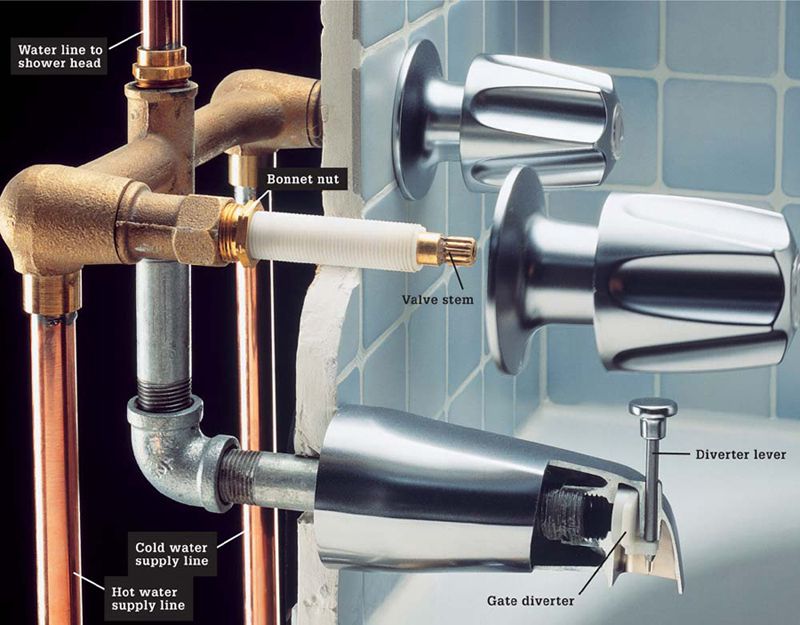
A two-handle tub/shower faucet can operate with compression valves, but more often these days they contain cartridges that can be replaced. Unlike a three-handled model, the diverter is a simple gate valve that is operated by a lever.
 HOW TO REMOVE A DEEP-SET FAUCET VALVE
HOW TO REMOVE A DEEP-SET FAUCET VALVE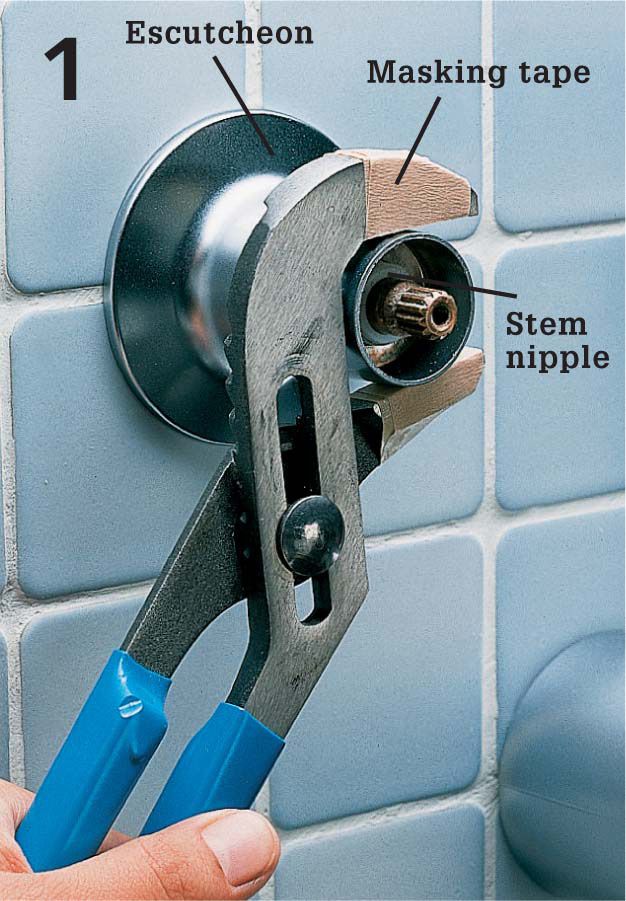
Remove handle and unscrew the escutcheon with channel-type pliers. Pad the jaws of the pliers with masking tape to prevent scratching the escutcheon.
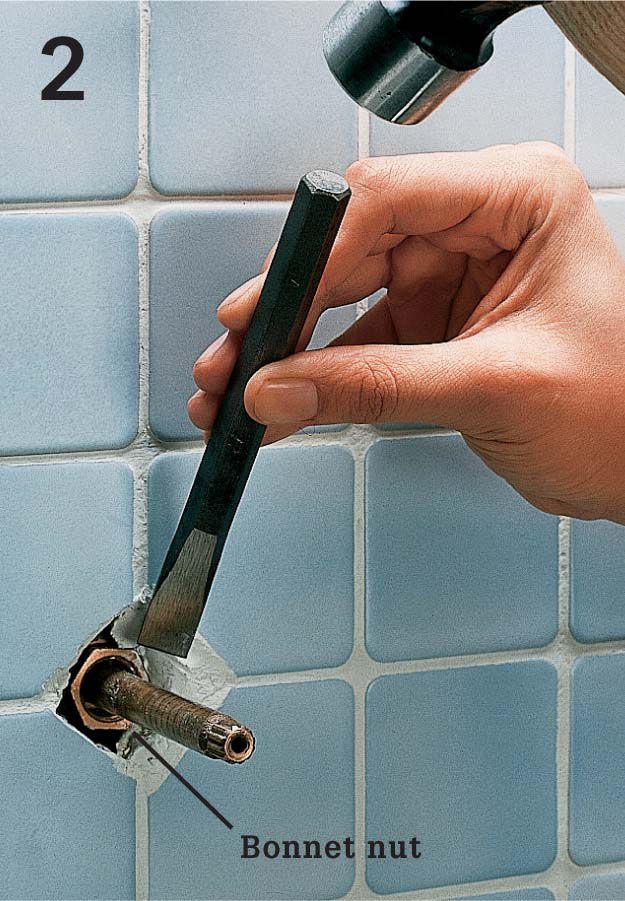
Chip away any mortar surrounding the bonnet nut using a ball-peen hammer and a small cold chisel.
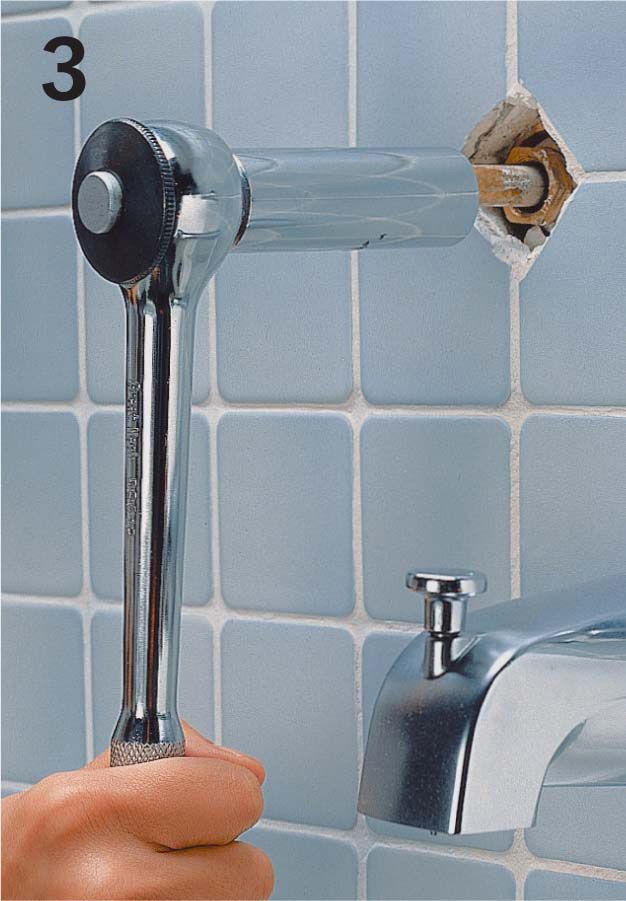
Unscrew the bonnet nut with a deep-set ratchet wrench. Remove the bonnet nut and stem from the faucet body.
 FIXING SINGLE-HANDLE TUB & SHOWER FAUCETS
FIXING SINGLE-HANDLE TUB & SHOWER FAUCETSA single-handle tub and shower faucet has one valve that controls both water flow and temperature. Single-handle faucets may be ball-type, cartridge, or disc designs.
If a single-handle control valve leaks or does not function properly, disassemble the faucet, clean the valve, and replace any worn parts. Use the repair techniques described on page 167 for ball-type, or page 168 for ceramic disc. Repairing a single-handle cartridge faucet is shown on the opposite page.
Direction of the water flow to either the tub spout or the showerhead is controlled by a gate diverter. Gate diverters seldom need repair. Occasionally, the lever may break, come loose, or refuse to stay in the up position. Remember to turn off the water before beginning any work; the shower faucet shown here has built-in shutoff valves, but many other valves do not. Open an access panel in an adjoining room or closet, behind the valve, and look for two shutoffs. If you can’t find them there, you may have to shut off intermediate valves or the main shutoff valve.
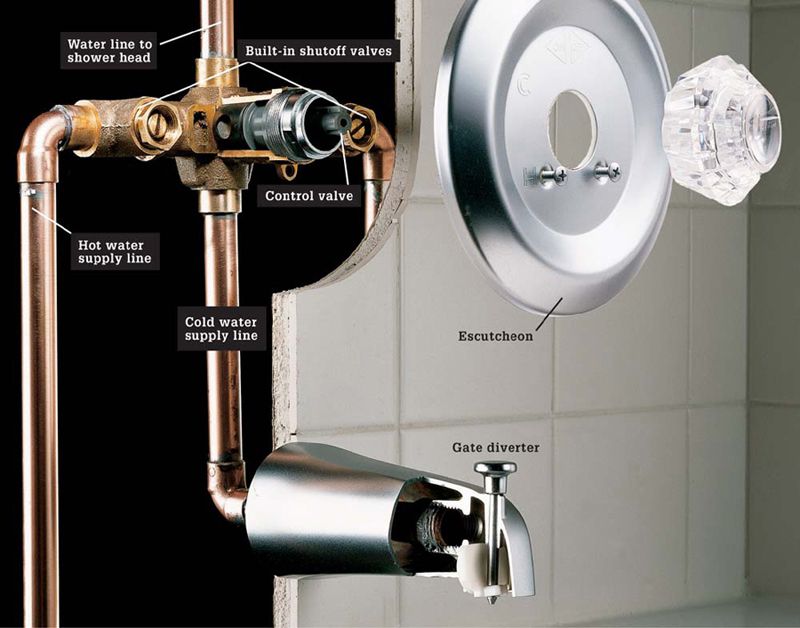
A single-handle tub/shower faucet is the simplest type to operate and to maintain. The handle controls the mixing ratio of both hot and cold water, and the diverter is a simple gate valve.
 HOW TO REPAIR A SINGLE-HANDLE CARTRIDGE TUB & SHOWER FAUCET
HOW TO REPAIR A SINGLE-HANDLE CARTRIDGE TUB & SHOWER FAUCET
Use a screwdriver to remove the handle and escutcheon.
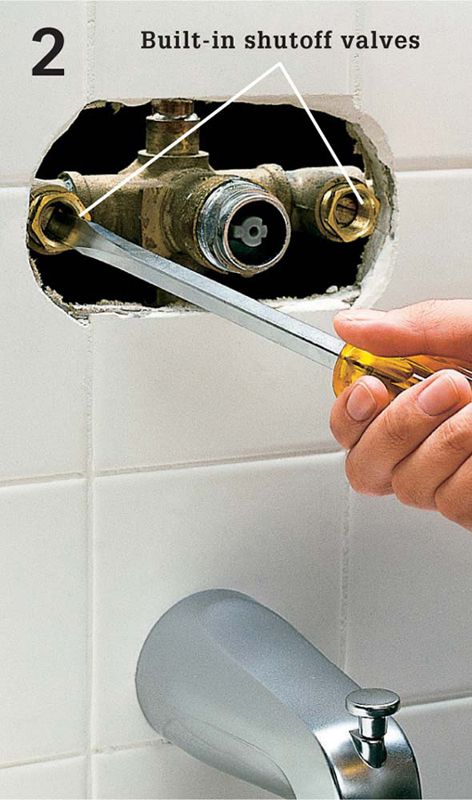
Turn off water supply at the built-in shutoff valves or the main shutoff valve.
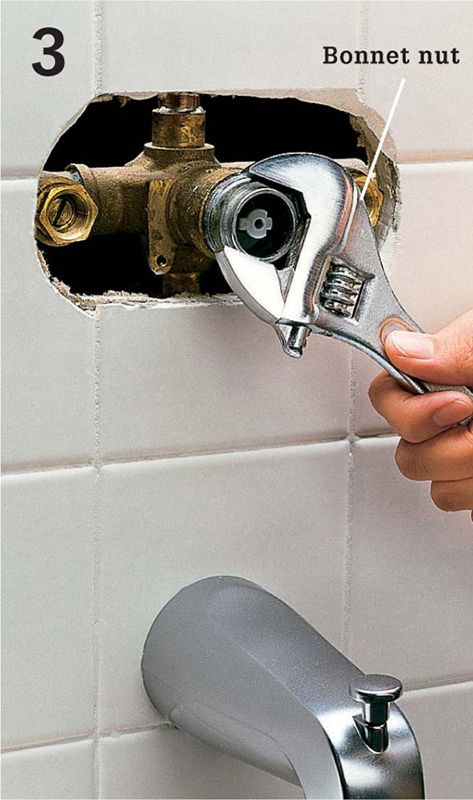
Unscrew and remove the retaining ring or bonnet nut using adjustable wrench.
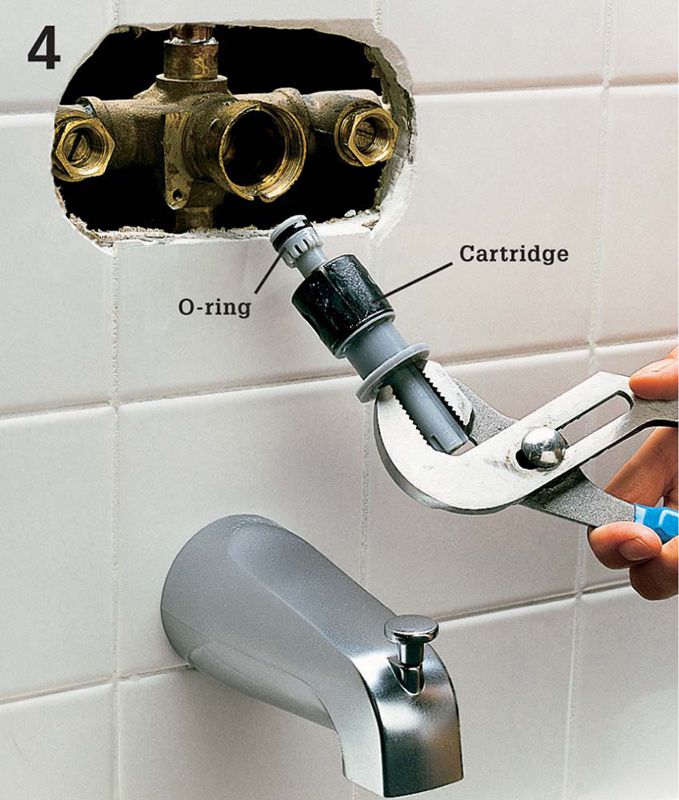
Remove the cartridge assembly by grasping the end of the valve with channel-type pliers and pulling gently.
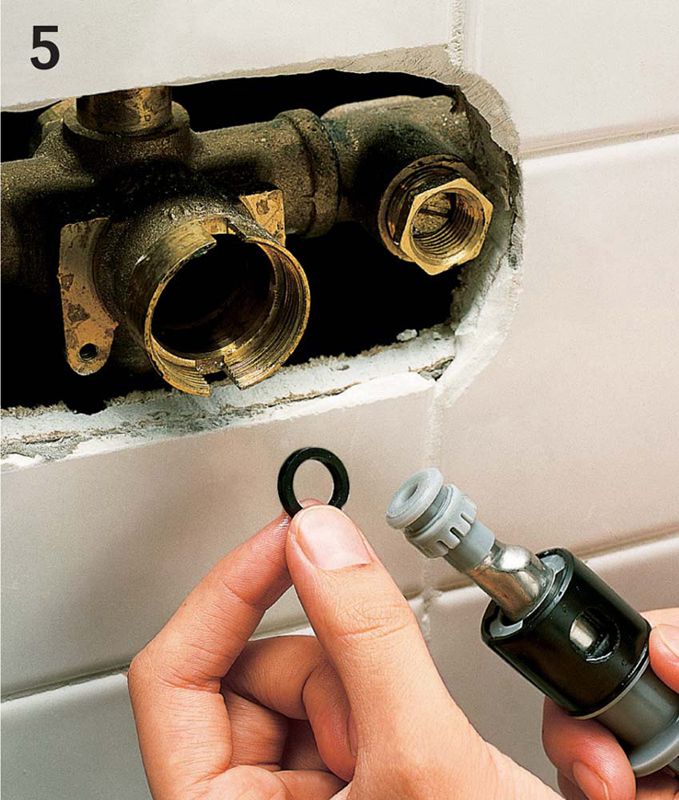
Flush the valve body with clean water to remove sediment. Replace any worn O-rings. Reinstall the cartridge and test the valve. If the faucet fails to work properly, replace the cartridge.
 SINGLE-HANDLE TUB & SHOWER FAUCET WITH SCALD CONTROL
SINGLE-HANDLE TUB & SHOWER FAUCET WITH SCALD CONTROLIn many plumbing systems, if someone flushes a nearby toilet or turns on the cold water of a nearby faucet while someone else is taking a shower, the shower water temperature can suddenly rise precipitously. This is not only uncomfortable; it can actually scald you. For that reason, many one-handle shower valves have a device, called a “balancing valve” or an “anti-scald valve,” that keeps the water from getting too hot.
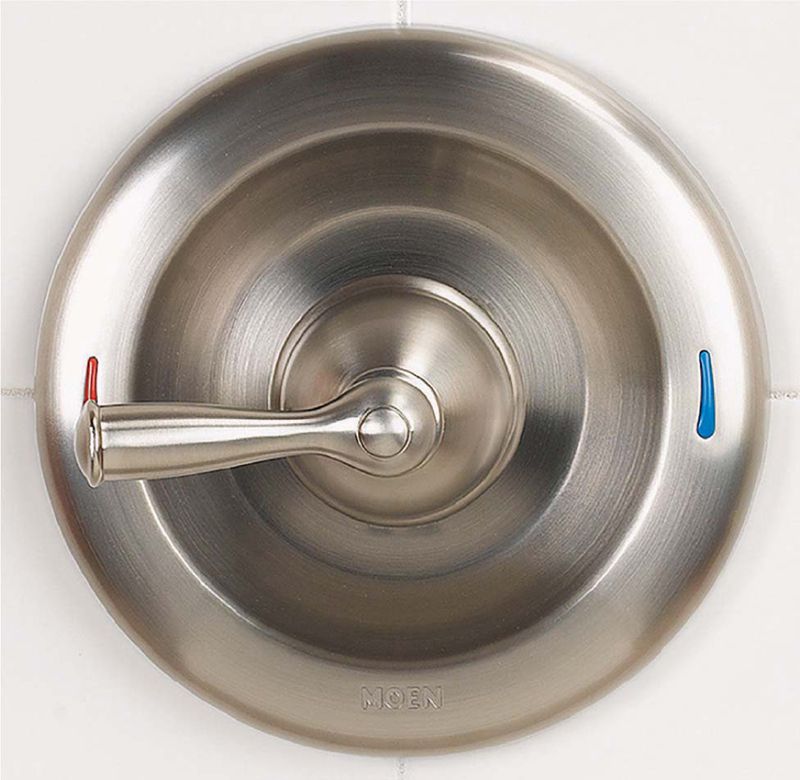
The temperature of your shower may drastically rise to dangerous scalding levels if a nearby toilet is flushed. A shower fixture equipped with an anti-scald valve prevents this sometimes dangerous situation.
 HOW TO ADJUST THE SHOWER’S TEMPERATURE
HOW TO ADJUST THE SHOWER’S TEMPERATURE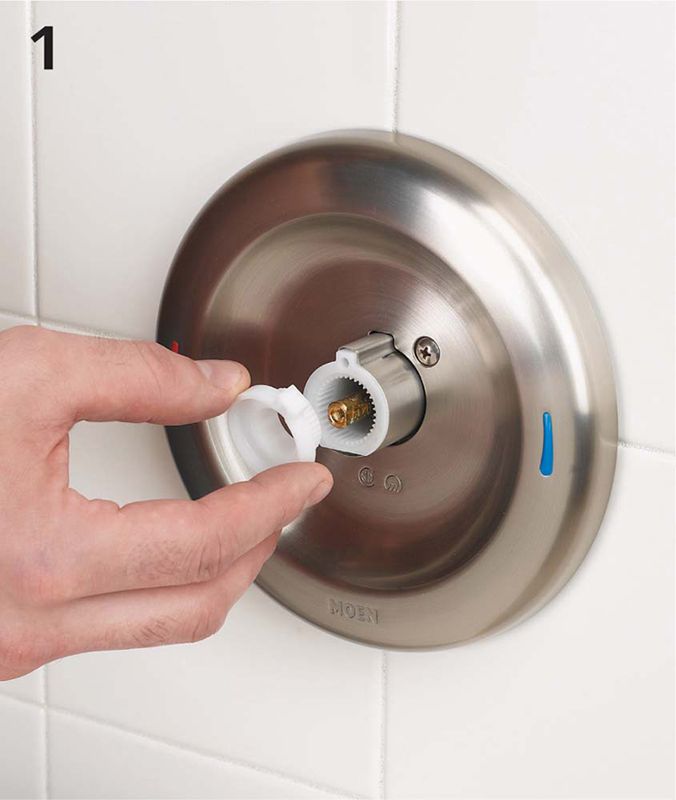
To reduce or raise the maximum temperature, remove the handle and escutcheon. Some models have an adjustment screw, others have a handle that can be turned by hand.
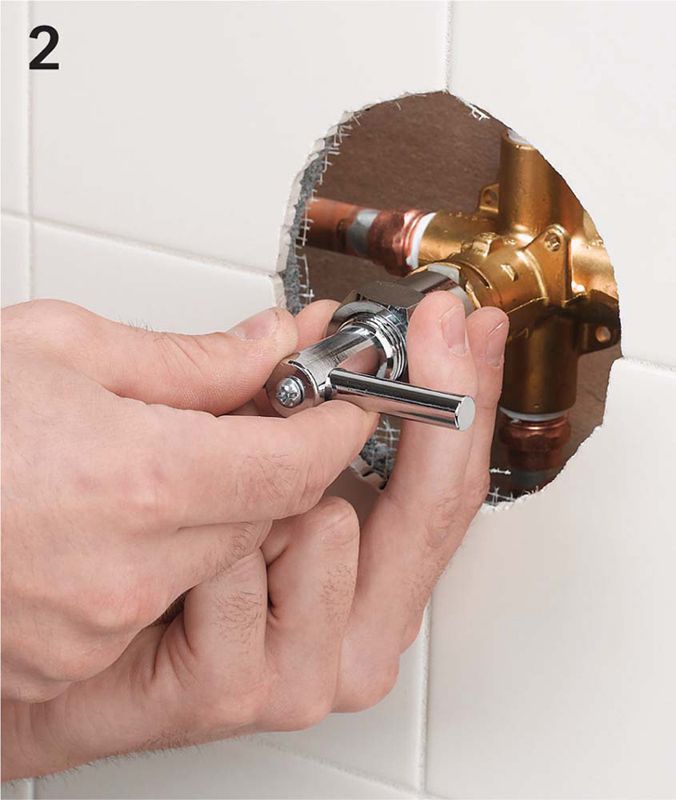
To remove a balancing valve, you may need to buy a removal tool made for your faucet. Before replacing, slowly turn on water to flush out any debris; use a towel or bucket to keep water from entering inside the wall.
 FIXING & REPLACING SHOWERHEADS
FIXING & REPLACING SHOWERHEADSIf spray from the showerhead is uneven, clean the spray holes. The outlet or inlet holes of the showerhead may get clogged with mineral deposits. Showerheads pivot into different positions. If a showerhead does not stay in position, or if it leaks, replace the O-ring that seals against the swivel ball.
A tub can be equipped with a shower by installing a flexible shower adapter kit. Complete kits are available at hardware stores and home centers.
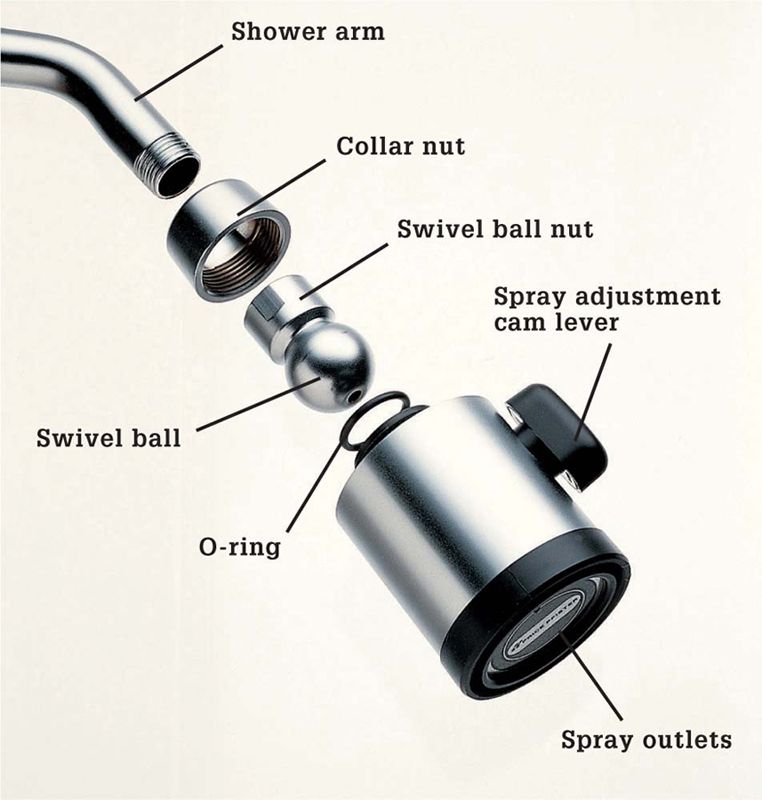
A typical showerhead can be disassembled easily for cleaning and repair. Some showerheads include a spray adjustment cam lever that is used to change the force of the spray.
 HOW TO CLEAN & REPAIR A SHOWERHEAD
HOW TO CLEAN & REPAIR A SHOWERHEAD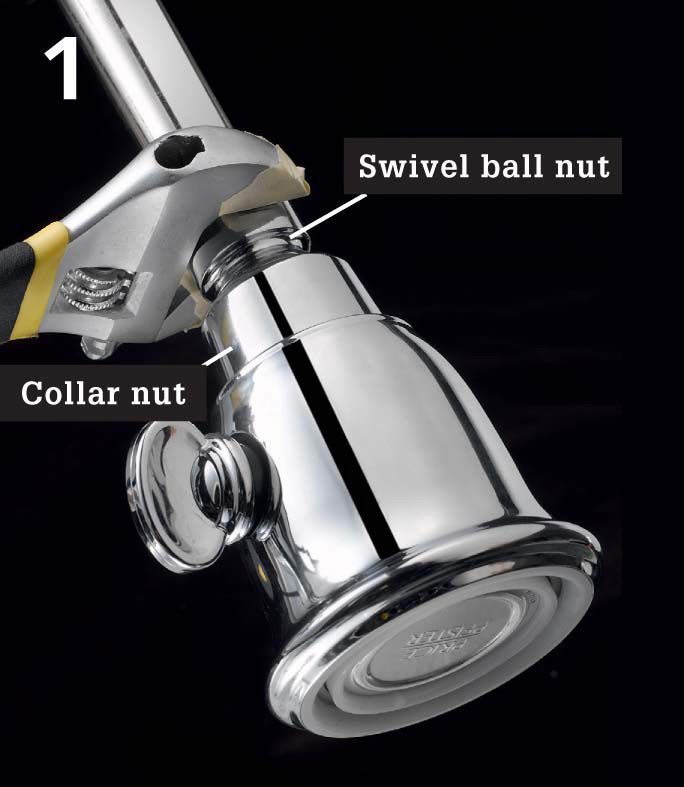
Unscrew the swivel ball nut, using an adjustable wrench or channel-type pliers. Wrap jaws of the tool with masking tape to prevent marring the finish. Unscrew collar nut from the showerhead.
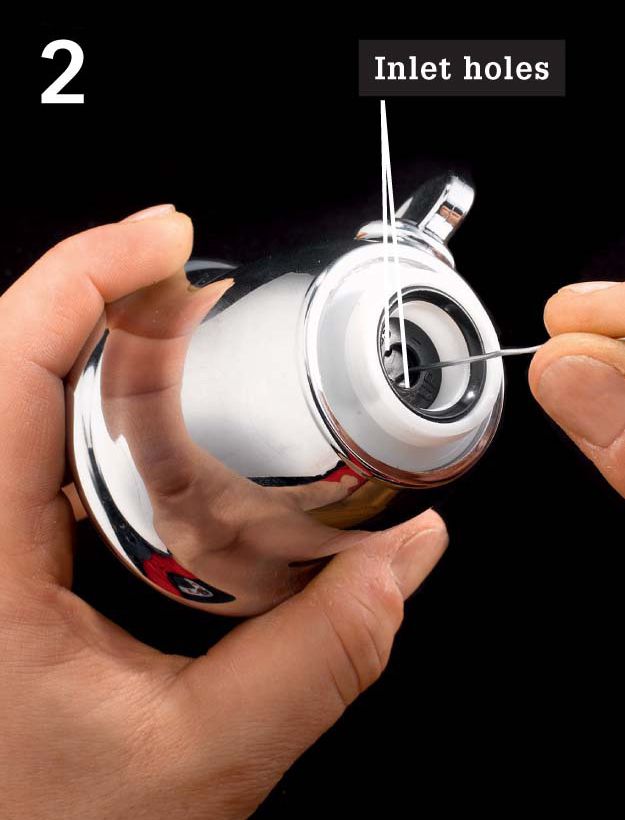
Clean outlet and inlet holes of showerhead with a thin wire. Flush the head with clean water.
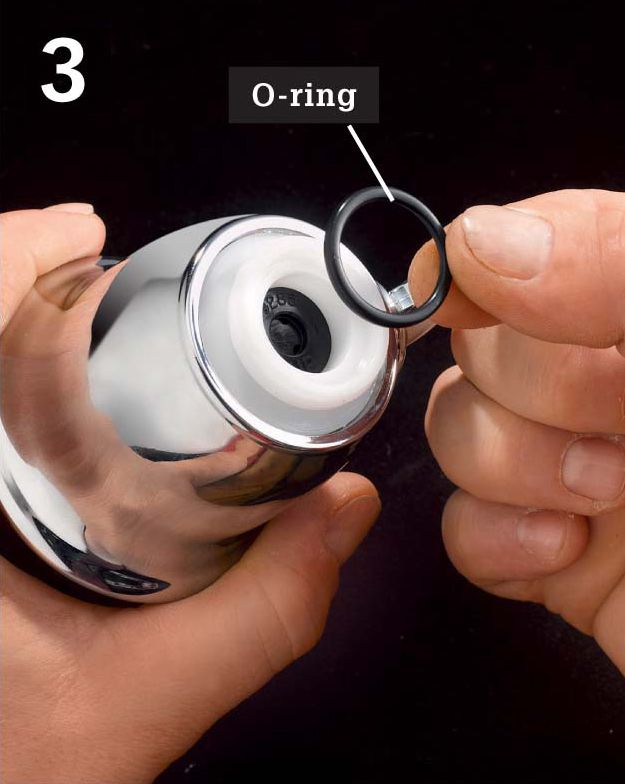
Replace the O-ring, if necessary. Lubricate the O-ring with faucet grease before installing.